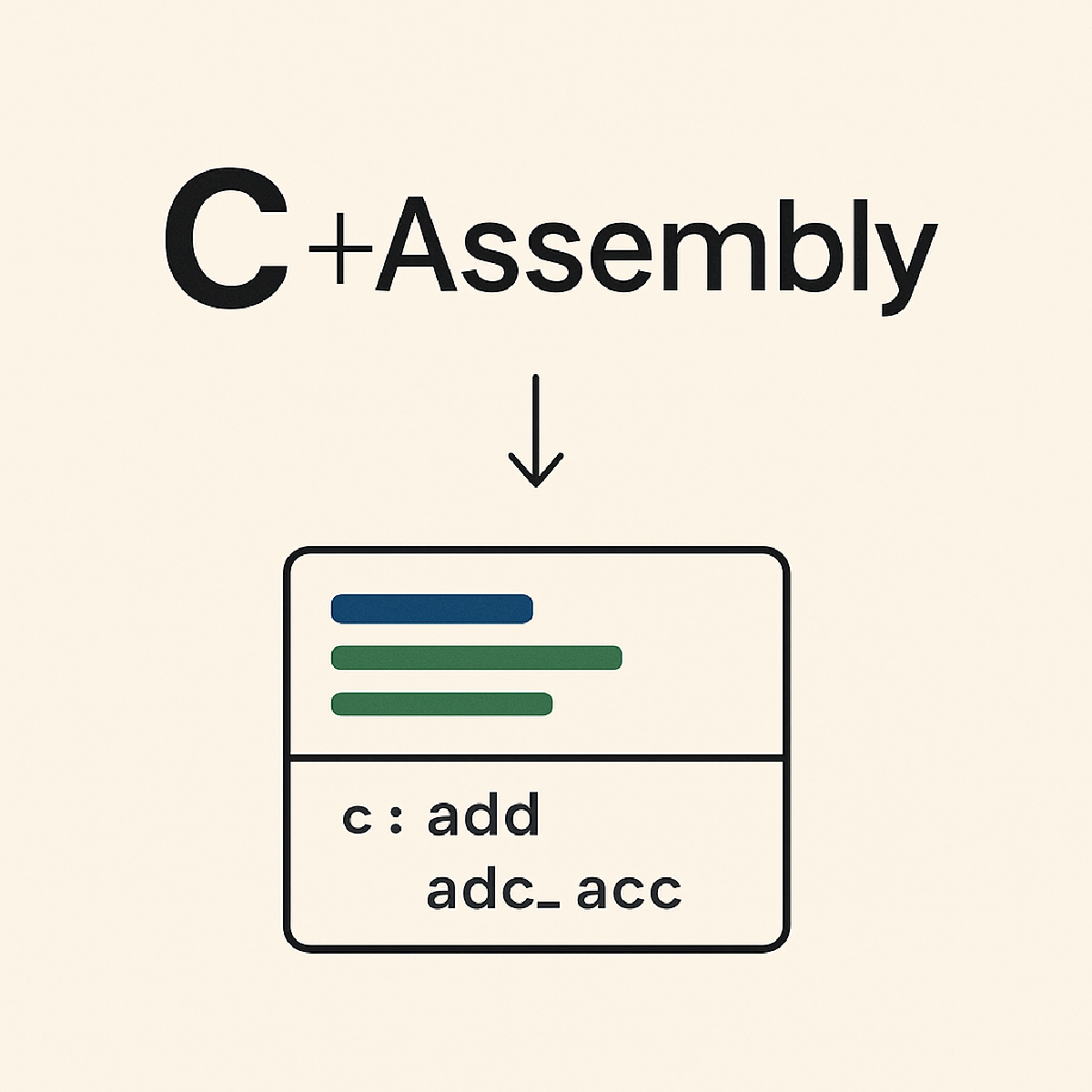Combining C and assembly allows you to leverage the strengths of both languages: the high-level structure and portability of C, and the low-level control and efficiency of assembly. This can be particularly useful for performance-critical code, hardware manipulation, or when dealing with legacy code.
Example code#
Here’s a step-by-step guide on how to call assembly from C using the AgDev environment. You can find the complete example code here on GitHub.
How arguments and return values are passed#
AgDev README explains briefly how arguments and return values are handled by AgDev but lets try to figure it out from more practical perspective.
Lets assume we have function uint16_t add(uint8_t a, uint8_t b). We implement this function in assembly.
Arguments#
You may wonder how to get a and b. This snippet shows how:
_add:
push ix ; Save the current value of index register IX on the stack
ld ix, 0 ; Initialize IX to 0
add ix, sp ; Adjust IX to point to the current stack frame
push bc ; Save the current value of BC on the stack
; Load the first 8-bit integer (function argument) into HL register pair
ld h, 0 ; Clear H register (upper byte of HL)
ld l, (ix+6) ; Load the first argument from stack offset 6 into L register (lower byte of HL)
; Load the second 8-bit integer (function argument) into BC register pair
ld b, 0 ; Clear B register (upper byte of BC)
ld c, (ix+9) ; Load the second argument from stack offset 9 into C register (lower byte of BC)
But why?
To understand this, we need more data:
- Arguments are passed on the stack (sp)
- Return address is also on stack sp + [0,2]
- In adl mode push and pull instructions always use 3 bytes
Look at how we don’t care about
bcon the stack!ixcontains stack pointer from before we pushedbc.
Lets create a table with offsets:
| ix offset | Contents |
|---|---|
| ix + [0,2] | Function return address |
| ix + [3,5] | IX value we pushed |
| ix + [6,8] | First argument |
| ix + [9,11] | Second argument |
Now you can see that it is quite easy to predict that a is in (ix + 6) and b is in (ix + 9).
Return values#
AgDev README explains that return values are always passed through one of registers - depending on the size.
Second part of the example function:
add hl, bc ; Add BC to HL, result is stored in HL
pop bc ; Restore the original value of BC from the stack
pop ix ; Restore the original value of IX from the stack
ret ; Return to caller, result is in HL
In our example we have uint16_t as function output - which is 16 bit and based on documentation it will be stored in hl register. Luckily add hl, bc will store its result in hl register and it can automatically become a return value for this function.
Glue code#
Previous section told you how to write assembly compatible with C, but how to actually tell C about this function we wrote in assembly?
Assembly file#
There is a small template you will use for each file you write in assembly for AgDev
assume adl=1 ; turn on 24 bit addressing mode (Agon uses ez80 and ez80 have this feature)
section .text ; make sure executable instructions you write are in correct memory section
You will also need to expose functions you want to be visible in C. You can do so by adding public declaration.
public _add
_add:
function_body
ret
C function definition#
You also need to define function in C. You can create header for this:
#ifndef MATH_H
#define MATH_H
#include <stdint.h>
extern uint16_t add(uint8_t a, uint8_t b);
#endif
That’s it! You can call add function written in assembly via C now! You can look at example provided here for visual aid.
